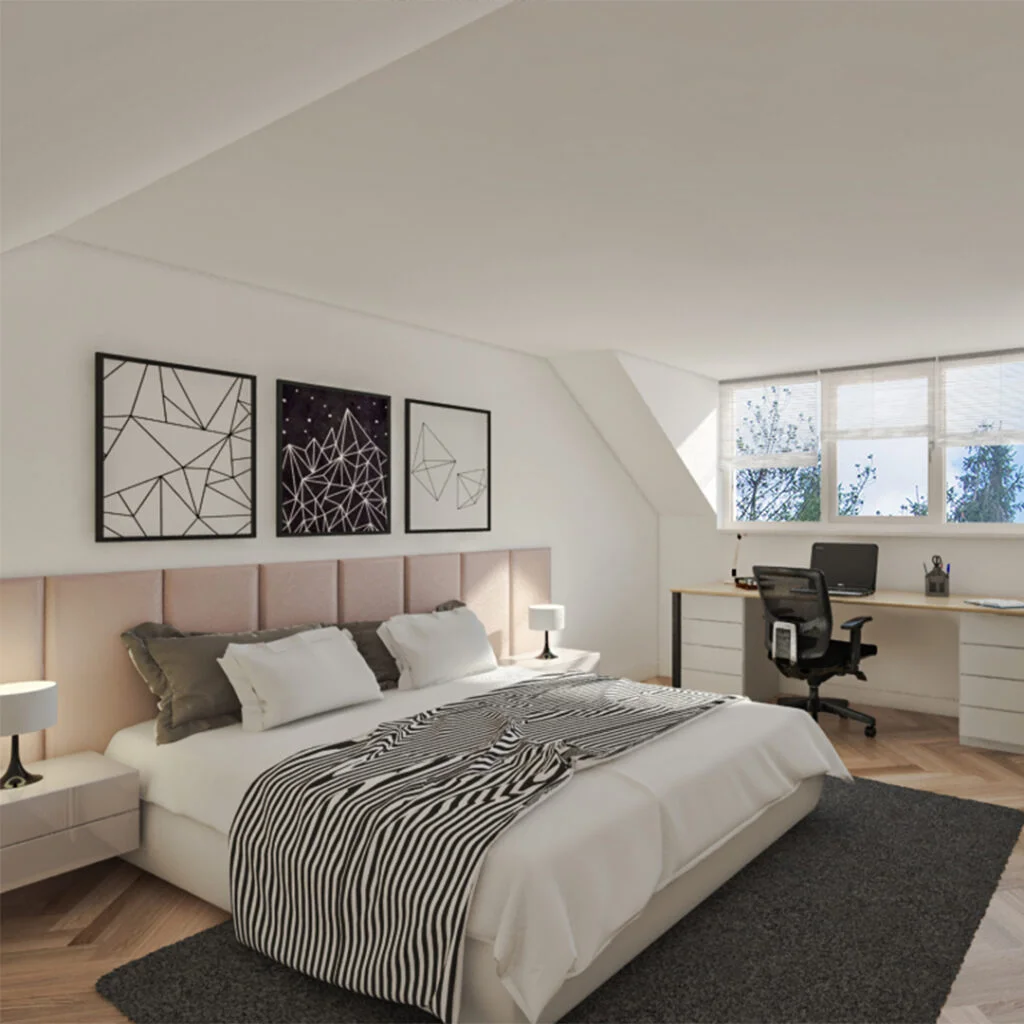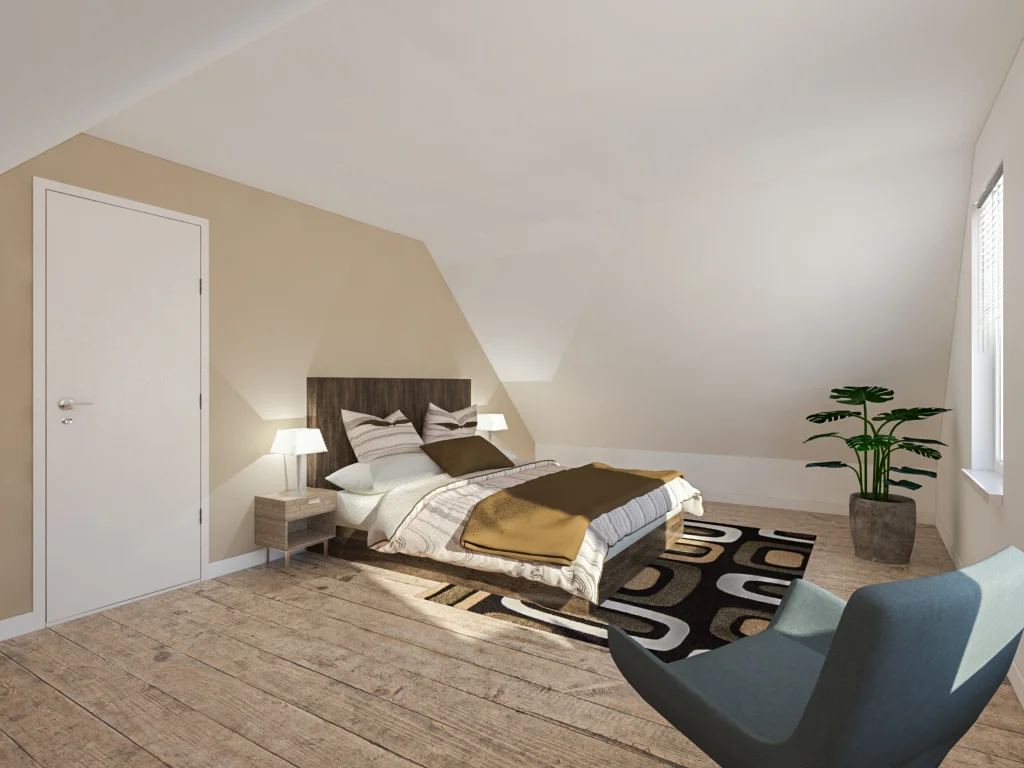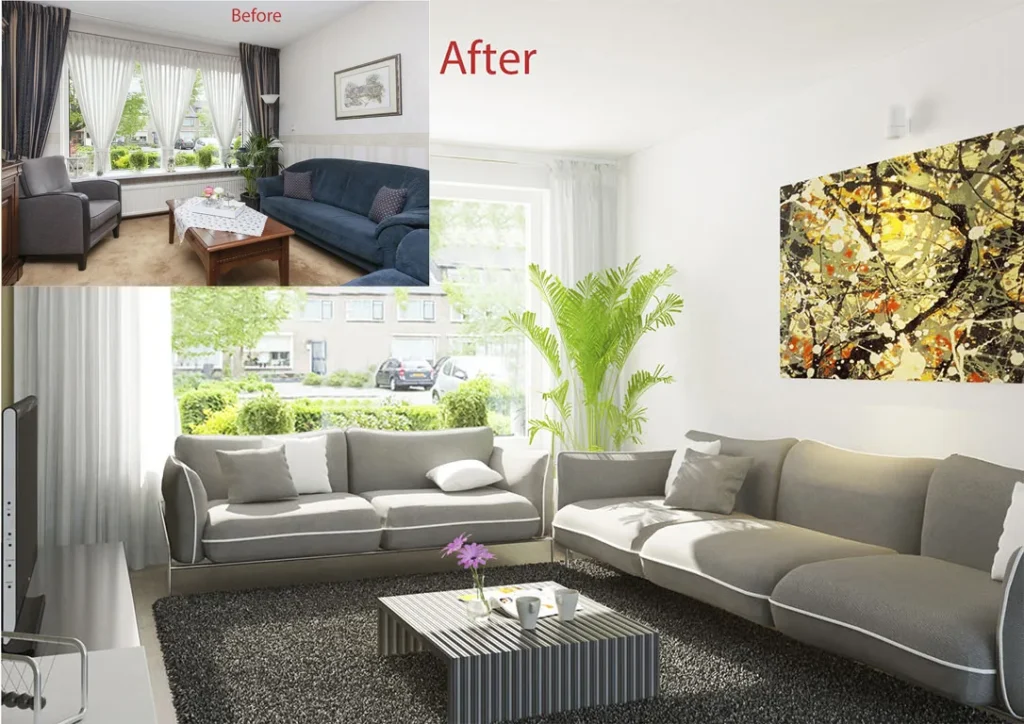3D Interior Design And Render
In real estate and interior design, visuals play a pivotal role.
They are the bridge between the property and potential buyers, setting the stage for their imagination.

Enter 3D interior design and render. This technology has revolutionized the way properties are presented, enhancing their appeal and marketability.
In this article, we delve into the world of 3D interior design and rendering. We explore its benefits, particularly in the context of real estate listings.
Whether you’re a real estate agent, a homeowner, or an interior designer, this guide will provide valuable insights.
Stay with us as we unravel how 3D interior design can transform property listings and attract more buyers.
The Evolution of Interior Design: Embracing 3D Technology
Interior design has come a long way. From hand-drawn sketches to digital 2D plans, the industry has seen significant advancements.
The latest leap forward is the adoption of 3D technology. This has brought about a new era of interior design, known as 3D interior design and rendering.
This technology allows for the creation of realistic, three-dimensional visuals. It’s a game-changer, providing a more immersive and engaging experience for potential property buyers.
Defining 3D Interior Design and Rendering
3D interior design and rendering is a digital process. It involves creating a three-dimensional model of a space, then adding textures, colors, and lighting to make it look real.
This process allows designers to visualize a space before it’s built or renovated. It’s a powerful tool for planning and decision-making.
In the context of real estate, 3D renders can be used to showcase properties in their best light, attracting potential buyers and speeding up sales.
The Visual Power of 3D Renders in Real Estate Listings
In real estate, first impressions matter. A well-presented property can attract more potential buyers and command a higher price.
3D interior design and rendering can take property presentations to the next level. It allows for the creation of photorealistic images that highlight the best features of a property.
These images can be used across various marketing platforms, from online listings to print brochures, enhancing the overall appeal of the property.
Traditional Photography vs. 3D Interior Renders: A Comparison
Traditional photography has been the go-to method for showcasing properties. It provides a realistic view of the space, but it has its limitations.
3D interior renders, on the other hand, offer more flexibility. They allow for the visualization of different design options and potential renovations.
Moreover, 3D renders can create an immersive property experience, engaging buyers more effectively than static photos. This gives 3D interior design a competitive edge in the real estate market.
The Process Behind Creating Stunning 3D Interior Designs
Creating a 3D interior design and render involves several steps. It starts with a clear understanding of the space and the client’s vision.
Next, the 3D rendering artist uses specialized software to create a digital model of the space. This model is then filled with furniture, decor, and lighting to match the design plan.
The following steps are typically involved:
- Gathering project details and requirements
- Creating a 3D model of the space
- Adding furniture and decor
- Adjusting lighting and textures
- Rendering the final image
The final render is a photorealistic image that can be used across various marketing platforms. It provides a detailed and accurate representation of the space, enhancing the property listing.
The process requires a specific skill set, including proficiency in 3D rendering software and a keen eye for design.
Key Software and Skills for Professional 3D Rendering
Professional 3D rendering requires the use of specialized software. These tools allow artists to create detailed and realistic models of interior spaces.
Some of the most popular software includes SketchUp, AutoCAD, and 3ds Max. These programs offer a range of features for creating, editing, and rendering 3D models.
In addition to software proficiency, 3D rendering artists need a strong understanding of interior design principles. They must also have a keen eye for detail, as even minor inaccuracies can detract from the realism of the final render.
The Cost-Effectiveness and Environmental Benefits of Virtual Staging
Virtual staging, made possible through 3D interior design and rendering, is a cost-effective alternative to traditional staging. Traditional staging involves the physical arrangement of furniture and decor in a property, which can be expensive and time-consuming.
On the other hand, virtual staging allows for the digital placement of furniture and decor. This eliminates the need for physical items, reducing costs significantly.
Moreover, virtual staging is environmentally friendly. It reduces the need for physical products and transportation, contributing to a lower carbon footprint.
Enhancing Buyer Engagement Through 3D Visualization
3D interior design and rendering can significantly enhance buyer engagement. It provides a realistic and immersive visual experience, allowing potential buyers to visualize the property as their own.
This immersive experience can evoke emotional responses, which are crucial in the buying process. It can make a property more appealing and memorable to potential buyers.
Moreover, 3D visualization allows for customization. Buyers can visualize different design options, further enhancing their engagement and interest in the property.
Case Studies: Successful Real Estate Listings with 3D Renders
Several real estate listings have leveraged 3D interior design and rendering to great success. These listings have seen increased engagement, faster sales, and higher selling prices.
One such example is a luxury condo listing in New York City. The 3D renders showcased the property’s potential, attracting a high number of interested buyers.
In another case, a 3D render of a historic property restoration helped the listing stand out. It allowed potential buyers to visualize the restored property, leading to a quick sale.
Choosing the Right 3D Rendering Services for Your Real Estate Needs
Choosing the right 3D rendering service is crucial for your real estate needs. It can make the difference between a successful listing and a missed opportunity.
Consider the service’s portfolio. It should showcase a variety of styles and property types. This indicates versatility and skill.
Also, consider the service’s turnaround time. Fast, efficient service can help you get your listing to market quicker.
Finally, consider the service’s customer service. Good communication is key in achieving the desired result in your 3D renders.


